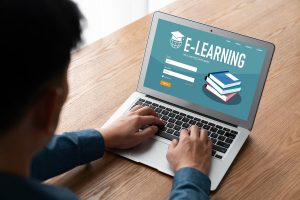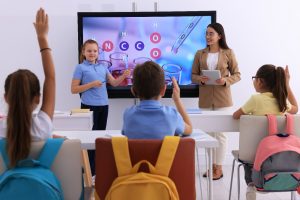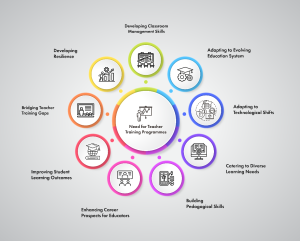
For centuries, the core of our education system was ‘One size fit all’. The same curriculum and the same assessment for all students, without exception. They were considered at the same learning level, making uniform teaching and learning methods a norm in schools. While this approach once proved to have its own merits, consistency and structure, to name a few, it no longer meets the current education demands – flexibility to cater to individual learning needs. The ‘One size doesn’t fit all’ is now a reality with the emergence of educational technology. The focus has now shifted to make teaching and learning personalized and adapted to the diverse needs of each learner.
In traditional classrooms, the curriculum is fixed and depends on the teachers to deliver the lesson effectively. The students experience a pre-designed schedule of learning through activities with ongoing assessments. This uniform learning experience may not account for their different learning styles. In contrast, a learning experience powered by the latest technological advancements like AI, the use of digital platforms and adaptive learning tools paves the way for creating tailored learning paths that best suit their interests and abilities. AI helps determine the current level of learning, as well as its strengths and weaknesses, via adaptive assessment, which helps customize the content and activities. It monitors and predicts the learning pattern, which allows to curate specific programs with flexible features.

Irrespective of the mode of delivery of instruction, physical or digital, the cornerstone of learning is a well-researched and scientific curriculum framework. A curriculum framework for personalized learning must reflect some basic principles.
- Make it relevant – Follow the credible industry educational norms and policies that allow for integrating regional cultural practices within the curriculum. A relevant curriculum focuses on age- specific learning activities incorporating 21st-century skills in technology-empowered classrooms.
- Bite-sized modules – For any learning experience to have a lasting impact, depth and duration are critical. Content that is presented in the form of long lessons, lengthy videos or several chapters compiled into one is likely to disinterest the learner. He may lose focus, discouraging him from completing his learning journey. Design the framework to include courses broken into smaller units that allow the learner to progress at their pace.
- Multi-modal learners – Learning that suits your style is the biggest advantages of personalized learning. Reading a text, viewing a video lesson, listening to a recorded lecture, debating in a forum, or playing an interactive games, are all plausible learning options on offer. The program framework, therefore, must factor in integration of different multimedia resources to enhance engagement and retention.
- Flexible assessment – Personalized and adaptive learning allows for assessment to take place in different forms, such as quizzes, projects, gamification, peer reviews etc These assessments need to be integrated at appropriate intervals within the content and modules within the curriculum framework. This will ensure that assessments focus on ongoing evaluations and making necessary modifications to help the learner advance to the next level.
- Make it relevant – Follow the credible industry educational norms and policies that allow for integrating regional cultural practices within the curriculum. A relevant curriculum focuses on age- specific learning activities incorporating 21st-century skills in technology-empowered classrooms.
- Real World Application – The framework must adapt to the emerging trends and opportunities in the education space. To prepare the learners for future employability, integrate assignments and projects that prepare them for the real-world skills. Application- based assessment in the form of projects, case studies and internships are essential for any program.
![]()
Personalized learning comes with its set of benefits and challenges. It is advantageous that, learners have accessibility and flexibility to progress at their own pace. Instant feedback, and data-driven AI recommendations and learning insights help the learner receive content suited to their needs. On the other hand, the lack of human interaction in online learning reduces the chance of peer collaboration and engagement.
Technology in education is here to stay. To make it truly impactful, we must focus on making education learner centric. This is possible with a sound curriculum design, flexible learning options and customized solutions. After all, the vision of education is not to make learning standard but to tap into the uniqueness of every learner.
Author – Sweta Dholakia, Lead | Quality Assurance


